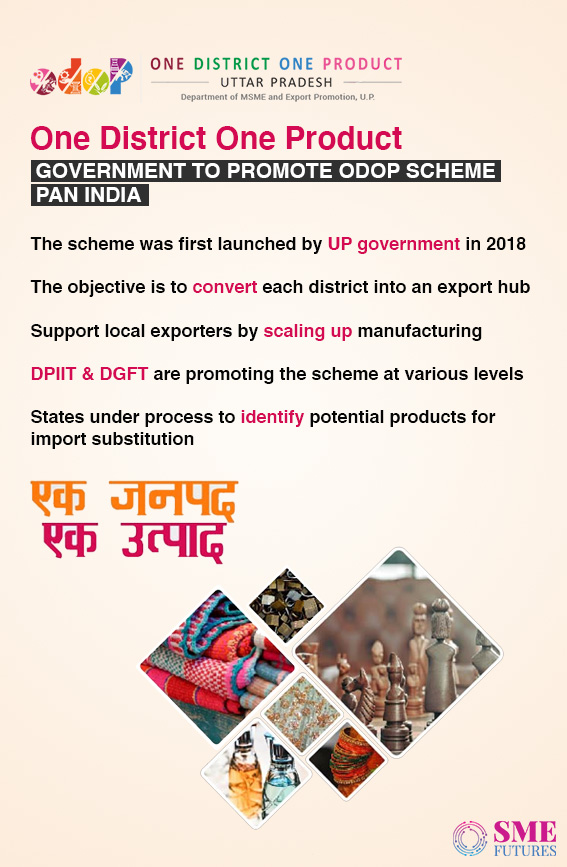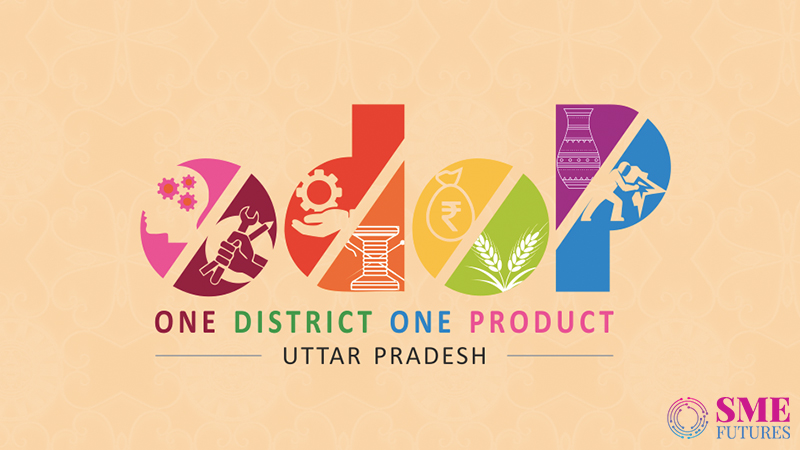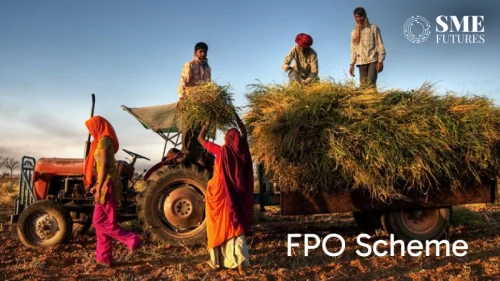Famous for its tourist destinations and hot springs, Japan’s Oita prefecture was once non-existent on the world’s map. This rural mountainous province was isolated and once was witnessing severe population decline. Its GDP had hit rock bottom in 1970s. However, the entire economy took a giant leap surprisingly with One Village One Product (OVOP) movement.
Beginning in 1979 and ending in 2003, this region’s economic model is a success story adapted by various countries globally. Asian regions such as China, Cambodia, and Indonesia have all been significantly benefitted by the concept. The movement has now been rechristened with different names according to the target group of the movement.
Based on the principles of local yet global, self-reliance and creativity, and maximum utilisation of human-resources, this OVOP movement greatly resonates with the government’s vision of Make in India and Vocal for Local with Global outreach. Akin to the same concept, Government of India has come up with One District One Product (ODOP) scheme.
The scheme aims to boost industrialisation and manufacturing at the district levels to promote the goals of Atmanirbhar Bharat. The union ministry of commerce and industry is working on an institutional mechanism to promote the ODOP scheme. But, the question still stands there! Can our government replicate the success attained by Oita prefecture’s OVOP concept in India?
Advent and Spread of ODOP
Uttar Pradesh government was the first state of India to launch the concept of One District One Product in 2018. The aim was to encourage indigenous and specialised products such as carpets from Bhadohi, perfumes from Kannauj or Kalanamak rice of Siddharthnagar district etc. It also aimed to create product specific traditional industrial hubs across 75 districts of Uttar Pradesh.
The ODOP scheme so-far has helped the state in increasing its exports by about 30 per cent and has also helped it in becoming the third-highest exporter among all states. Furthermore, the export of Bhadohi carpets has doubled from Rs 4,000 crore to Rs 8,000 crore. Industries like handicrafts, food-processing, carpets, garments etc have also earned more foreign exchange.
In addition to this, government has also signed few MoUs with e-commerce organisations such as eBay and Flipkart to promote products. In coming October, the state government is set to organise a five-day international virtual exhibition of ODOP in which around 25,000 stalls will be available for buyers.
Moreover, the state government is all set to promote products selected under ODOP scheme across the country through retail stores. The government will also provide financial assistance to artisans whose products are selected. Products selected under ODOP scheme will be displayed in retail stores across the state. However, display of these products will be confined to stores in airports and railway stations outside Uttar Pradesh.
In the similar vein, the Ministry of Commerce and Industry is now working on an institutional mechanism to promote the ODOP scheme across India. The intent behind this is to make India a manufacturing powerhouse. The scheme will boost existing industrial capacity beyond urban areas by strengthening productive manufacturing of rural or semi-urban areas.
According to the Union minister Piyush Goyal, the future manufacturing clusters may also create low value addition manufacturing cluster in rural India. Calling for its scaling it up as a national movement, he assured that the centre government will provide aid of every possible kind in packaging, branding, and global marketing of such products.
Announcing the initiative, the Department for Promotion of Industry and Internal Trade (DPIIT) has begun conversations at various levels. The Department of Commerce is also engaging actively with state and central government agencies through DGFT to promote the initiative of One District One Product.
The objective is to convert each district of the country into an export hub by identifying products with export potential in the district. Scheme will then address bottlenecks in exporting these products and support local exporters by scaling up its manufacturing and by finding its potential buyers outside India. This will be done with an aim of promoting exports and manufacturing industry in a particular district. It will also generate employment in the district.

Is scheme just an aspiration or a concrete plan?
Wherever the concept has been adopted in the world, it has generated positive results. It is now anticipated that the scheme will rejuvenate industries on the basis of clusters in India. The ODOP scheme seems more relevant now if we acknowledge the fact that lockdown imposed due to coronavirus led reverse migration at large.
Talking about the implementation of ODOP across India, Dr. Arun Singh, Global Chief Economist at Dun & Bradstreet adjudges this scheme as a measure to improve competitiveness in markets. He tells, “Though already adopted by UP government as One District One Product in 2018, this initiative would certainly help government to realise its goal of doubling the farmers’ income and strengthening the agriculture value chain.”
He further says, “Not only will it lead to improving competitiveness of unique local area-based products both in national and global markets, it would also enhance the added values of the local product and importantly promulgate optimum use of local resources including labour force. The government’s plan to promote the scheme in other states would bridge the gap between urban and rural areas and prevent interstate rural-urban migration of workforce.”
The ODOP initiative has been now launched by the central government through the cluster-based scheme of Formalisation of Micro-food processing Enterprises (PM FME) in June 2020. Working rapidly with all states, Ministry of Commerce and Industry along with the private sector has identified 24 products. For the manufacturing of these listed products, government will partner with the industry to expand their reach.
Along with this, ministry has directed states to identify products with a market potential for import substitution and export accentuation, and to establish forward and backward market link channels. Joining the bandwagon for growth of manufacturing, Punjab has already released a list of 22 products related to food industry covering all districts. This includes Amritsar for pickle and murabba, Ludhiana for bakery products, Jalandhar and Moga for mangoes and so on.
In another development, states such as Gujarat, Jharkhand, Madhya Pradesh, Manipur and Telangana have also expressed interest in being a part of the programme. Expressing his views on the scheme, Dr. SP Sharma, Chief Economist and Director of Research at PHDCCI told that the scheme is beneficial for future and all the states should come forward to participate in it.
Dr SP Sharma advises, “States should participate more in such movements for the prosperity of our nation. All Indian states have a potential to help the economy in rebounding. In my opinion, there are loads of opportunities as each state has its own strength and expertise. They have unique products and various specialities to offer in the market.”
In his opinion, states can also collaborate and share skills and good practices. This is further going to enhance the opportunities in various sectors. He opines, “In my view, all the states are specialised in various segments. They could exchange their specialisation and adopt the best practices to move forward. This way they can contribute in the Indian economy.”
He further added, “I think government policies like one district one product is critical for growth of economy and the country. All the states government must implement this reform so that every district in the country has their own identity and a good growth graph.”
Lately the government is focusing more on the MSME sector, while giving a clarion call on manufacturing local products. In the next five years, government is looking to give a Rs 20 lakh crore boost to India’s manufacturing output. Projection is to provide crores of job opportunities and expand economic activity in the country.
Swapna More, State Chairperson Maharashtra – Confederation of Indian Micro, Small and Medium Enterprises (CIMSME) and co-founder at KAGAAY, a realty platform, discusses various facets of the scheme in depth while speaking to SME Futures.
“The scheme has proved to be successful in UP. After its successful experimentation in UP, it is now the time to take it across India for the growth and development of MSMEs. I believe that this scheme will be certainly beneficial for small businesses,” she tells.
According to her, ODOP is another example of consistent efforts by the Government of India to promote MSMEs. India has a huge rural population with crores of small business owners possessing hereditary local skills but they lack exposure. Hence profit, promotions, and development are confined. ODOP is initiated to help local and specialized products and crafts.
“ODOP will help not only in preserving, developing local skills, and craft but also in promoting it. In the process, it will generate employment for local people too. The scheme also aims at encouraging the use of new technology and training of artisans to survive and grow in a competitive market situation. Business loans are made available at very low-interest rates. Considering all this, scheme will prove to be instrumental in the growth of small businesses,” she asserts.
The government is yet to launch ODOP scheme in Maharashtra. However, CIMSME has launched its own cluster-based approach concept derived from ODOP –NISTTHA (National Initiative for Social, Technological and Trades Holistic Advancement) to contribute in this initiative.
Swapna further informs that NISTTHA is a cluster approach to strengthen local economies. Clusters are formed based on geographical location and type of industries both heterogeneously and homogeneously. The concentration of an industry at a particular location may result in significant cost savings to firms in the cluster.
“NISTTHA focuses on the food industry, health care, artisans, service, and real estate. MAHANISTHHA (NISTHHA, Maharashtra) was launched on 22nd Aug 2020 where it announced five clusters. Maharashtra State Council, CIMSME already has established a state team and two district teams, Mumbai and Pune, rapidly expanding to other districts,” she adds.
Cluster approach with reference to Indian economy
Indian government goal is to be a $5 trillion economy by 2025 but the state of Indian economy is dire currently. In such circumstances, government has given a directive for local manufacturing and to become self-reliant. For this, it is imperative for our country to reduce imports and divert trade towards friendly nations while focusing on enhancing indigenous production and domestic capacity building.
Commenting on this, Swapna More tells, “Yes, the Indian Economy has been facing tough times for a few years. Small businesses are worst affected by this Indian market scenario. ODOP is actually one of the steps taken by the Indian government to pull the economy out of this slumber.” According to her, it is launched to protect, develop and promote small businesses. It will preserve cultural heritage, market indigenous crafts and reduce dependence on agriculture.
The bleak situation of economy also calls for enhanced competition among states which will then lead to ease of doing business. According to the experts, government is going to rank states under Ease of Doing Business (EoDB) rankings. It is to promote healthy competition among more than 700 districts of the country. It will also ensure that smaller towns and districts become more business-friendly in the coming times.
Dr. DK Aggarwal, president, PHDCCI said that the focus should be put upon One District One Product (ODOP) Scheme that aims to give boost to the traditional industries and enable the people to gain expertise in one product. “The scheme has the potential to contribute towards the growth of states’ GSDP and raise the quality of the products. It will help improve the quality of the product, and transform the product through packaging,” he adds in a statement.
Another aspect of the ODOP scheme is that it will boost the economy with the cluster approach. Started in 1990s cluster based development approach has played a significant role in reviving MSMEs and traditional industries over the years. Since then, cluster development is focussed in many government programmes.
Based on this model, the intent of the ODOP scheme is to develop new industrial clusters in various regions to increase the productivity in order to help these enterprises in competing nationally and globally. The manufacturing by clusters also permits greater focus on public resources.
The targeting of industrial development efforts permits regions to use their limited economic development resources more efficiently. The clusters approach encourages regions to focus on the recruitment, retention, and expansion of small businesses. It also helps them in running development programs rather than just providing assistance.
Talking about necessity of manufacturing in clusters, More opines, “Clustering will encourage networking among firms to help in taking advantage of complementary skills, exploit new markets, integrate activities, or pool resources or knowledge. In this way, cooperation will occur more naturally and frequently within industrial units.”
Another facet of ODOP is enhancing revenue generation. Experts are confident that ODOP initiative will make Indian economy stronger by accelerating industrial revenue. As a finance expert, Ketan Gaikwad, MD & CEO, Receivables Exchange of India Ltd. (RXIL) expresses his view on the scheme.
Commenting on the subject he says, “We are positive about the government’s push towards ‘One District One Product’ (ODOP) as a revenue generation mechanism for MSMEs through structured access to sell the products in the market and obtain funds through formal sources of finance. ODOP policy has come to light to increase the manufacturing output of MSMEs to Rs.20 trillion in the next five years, adding to the GDP.”
The recent surge in new-age sources of finance like TReDS platform and digital lending has added to the list of viable financing options available to MSMEs. This has led them towards formalization. RXIL alone has accounted for over 1.74 lakh invoices for MSMEs across several industries that have its corporate buyers registered on the platform.
It is proved that district-wise concentrated efforts can yield wonderful results for holistic industrial development. The manufacturing of specialised items produced in a particular district has led to increased profits and employment. Taking lessons from the success of ODOP in Uttar Pradesh, the center has rightly planned to take it across India.
The government will soon launch a ‘One Product One District’ programme for every district in the country to expand the outreach of their special product not just in India but across the world. The entire government machinery can then concentrate on single enterprises to encourage the skilled labour and artisans. This will lead to specialised production and thereafter local businesses can go global by exploring trade opportunities with countries outside India.











